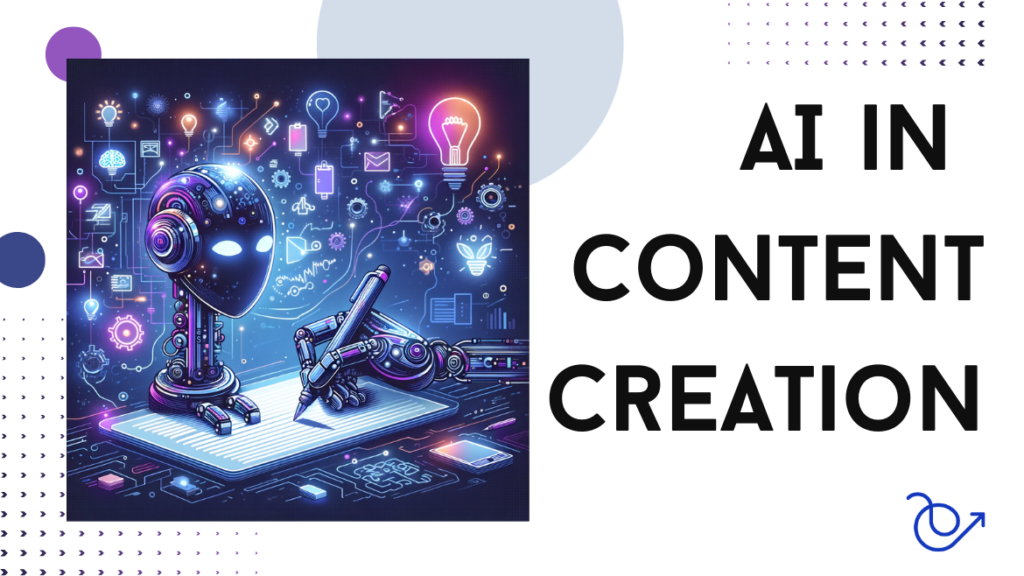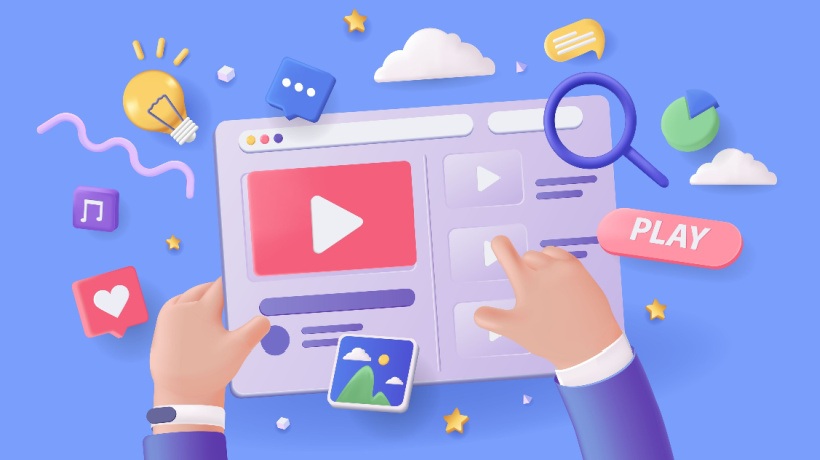Introduction
In today’s fast-paced digital world, attention is the new currency. With millions of articles, videos, and posts created daily, standing out has become both an art and a science. Traditional content marketing strategies, though still relevant, often struggle to keep pace with the dynamic online ecosystem. Enter artificial intelligence (AI)—a transformative force reshaping the way content is ideated, written, optimized, and distributed.
AI-powered content creation isn’t just a futuristic concept; it’s a present-day reality that’s enabling individuals and businesses to create impactful content with unmatched speed and precision. Whether you’re a solo entrepreneur, a seasoned marketer, or a major brand, understanding how AI can take your content from zero to viral is crucial to staying relevant in today’s digital landscape.
Understanding Virality in the Digital Age
Virality isn’t random—it’s a calculated outcome influenced by psychological triggers, platform algorithms, and user behaviors. At its core, viral content taps into human emotion, whether it’s joy, surprise, fear, or outrage. It spreads because it resonates deeply and compels people to share.
Platforms like Facebook, X (formerly Twitter), TikTok, and Instagram prioritize engagement. They use algorithms that amplify content with high click-through rates (CTR), shares, likes, and comments. For a piece of content to go viral, it must not only be seen but also acted upon.
Key metrics of viral success include:
- Engagement Rate: Indicates how actively users interact with content.
- CTR: Measures how compelling your headline and snippet are.
- Shareability: Reflects emotional resonance and relatability.
AI tools help by analyzing these patterns, making it easier to reverse-engineer virality.

The Rise of AI in Content Creation
AI in content creation has evolved rapidly, thanks in large part to natural language processing (NLP) and machine learning (ML). These technologies enable machines to read, understand, and generate human-like text. Tools like OpenAI’s GPT-4, Jasper AI, Copy.ai, and Writesonic have democratized content creation by offering anyone access to high-quality writing at scale.
Initially limited to simple auto-completions or grammar checks, today’s AI tools can:
- Generate full blog posts
- Summarize or paraphrase text
- Create ad copy, social media captions, and even video scripts
- Understand tone, context, and audience intent
The best part? These tools continuously learn from vast datasets, becoming smarter and more effective with each iteration.
Why AI-Generated Content Clicks
AI-generated content excels because it’s built on data. Instead of guessing what might work, AI analyzes:
- Search trends
- Consumer behavior
- Social media performance
- Competitive content
This data-driven approach ensures content is relevant and targeted. AI can personalize messages for different audience segments, increasing the likelihood of clicks and conversions.
Additionally, AI excels at A/B testing. It can quickly generate multiple versions of a headline, email, or ad copy, enabling marketers to determine which variation performs best.
Ultimately, AI-generated content combines efficiency with effectiveness, dramatically increasing the odds of virality.

Crafting Compelling Headlines with AI
A headline is your first—and sometimes only—chance to capture attention. Great headlines trigger curiosity, emotion, or urgency. AI tools are remarkably adept at crafting such headlines by:
- Analyzing high-performing headlines across industries
- Understanding emotional triggers like fear of missing out (FOMO), surprise, and humor
- Testing different tones and structures for maximum impact
Popular tools include:
- CoSchedule Headline Analyzer
- ChatGPT prompt-based generators
- Copy.ai headline creator
Example of an AI-generated headline:
- “You Won’t Believe What This Startup Did with AI—and How It Went Viral Overnight”
Such headlines are optimized to provoke curiosity and clicks.
Structuring the Perfect Blog Post
A well-structured blog post improves readability, boosts SEO, and encourages deeper engagement. AI tools can assist by:
- Generating outlines based on top-performing posts
- Recommending subheadings and content flow
- Ensuring clarity, coherence, and logical progression
Moreover, AI can adapt the content structure to match your brand’s voice—whether formal, witty, or educational. Storytelling, a critical component of compelling content, can also be infused with AI by incorporating narrative hooks and emotional arcs.
Skimmable content with bullet points, numbered lists, and bold highlights enhances UX and boosts dwell time—both critical to ranking and engagement.

SEO Optimization Through AI
Search engine optimization (SEO) is essential to discoverability. AI dramatically streamlines the SEO process by:
- Conducting keyword research using tools like SEMrush, Surfer SEO, and Ubersuggest
- Optimizing metadata such as meta titles, descriptions, and tags
- Providing real-time SEO scoring and actionable suggestions
AI also identifies content gaps and helps build topical authority by suggesting related subtopics and internal links. The result is not just well-written content, but content that ranks.
For example, Jasper AI can integrate with Surfer SEO to ensure your blog post hits all the right SEO markers while maintaining natural readability.

Visual Content and Multimedia Integration
Text alone often isn’t enough. Engaging visuals can elevate a post from good to viral. AI tools can generate:
- Custom illustrations or infographics using tools like DALL·E or Canva AI
- Videos with platforms such as Lumen5, Pictory, or Synthesia
- GIFs and memes tailored to audience preferences
These visuals improve social media shareability and time spent on page. AI can also suggest the optimal placement of visuals for maximum impact.
Multimedia integration ensures content is interactive, immersive, and accessible to various learning styles, increasing its viral potential.

Personalization and Dynamic Content Delivery
Modern audiences expect personalized experiences. AI enables hyper-personalization by:
- Analyzing user behavior and preferences
- Customizing website content, email campaigns, and ads
- Delivering dynamic content based on time, location, and device
For instance, Netflix uses AI to personalize thumbnails, while Amazon tailors product suggestions. In content marketing, personalized blog recommendations or dynamic CTAs significantly increase engagement and conversions.
Campaign Monitor and Mailchimp AI tools allow you to segment lists and craft personalized email flows that are more likely to be opened and clicked—boosting your content’s reach and virality.

Real-World Examples of AI-Driven Viral Content
Brands across industries are leveraging AI to create content that spreads. A few notable examples:
- HubSpot used Jasper AI to generate content for marketing campaigns, achieving 50% faster content turnaround.
- BuzzFeed experimented with AI quizzes and listicles that drove millions of shares.
- The Washington Post uses its in-house AI, Heliograf, to generate news articles, maintaining journalistic integrity while scaling coverage.
These examples prove that AI doesn’t just support content creation—it drives measurable results when used strategically.
Challenges and Ethical Considerations
Despite its promise, AI content creation isn’t without challenges:
- Plagiarism and originality: AI may unintentionally replicate existing content.
- Misinformation: Without human oversight, AI might spread false or misleading claims.
- Bias: AI models can reflect societal biases present in training data.
- Transparency: Readers may feel deceived if they discover content wasn’t written by a human.
To address these issues, brands must adopt responsible AI use policies, ensure editorial oversight, and clearly disclose AI-assisted content when appropriate.
Future of AI in Viral Content Marketing
The future is bright—and fast-evolving. Innovations on the horizon include:
- Predictive virality algorithms that forecast trending topics before they emerge
- Voice and video generation tools that produce podcasts and YouTube videos on demand
- AI integration with AR and VR for immersive storytelling experiences
Marketers who embrace these technologies will be better positioned to capture audience attention and maintain relevance in a saturated digital space.

Tools and Platforms for AI Content Creation
Some of the most effective tools in the AI content space include:
- ChatGPT – General-purpose content generation
- Jasper AI – Marketing-focused writing assistant
- Copy.ai – Ad and social copy
- Surfer SEO – SEO optimization
- Lumen5/Pictory – Video content
- DALL·E – Image generation
Each offers unique features suitable for businesses of all sizes, from solopreneurs to global enterprises. Most also integrate with CMS systems like WordPress, CRMs like HubSpot, and marketing platforms like Mailchimp.
Tips for Marketers to Leverage AI Effectively
To make the most of AI in content marketing:
- Start small: Experiment with headline generation or SEO scoring before scaling.
- Maintain oversight: Always review AI-generated content for accuracy and tone.
- Blend human creativity with AI efficiency for authentic messaging.
- Track performance: Use analytics to continuously refine your content strategy.
AI is a tool, not a replacement. When used strategically, it augments your creativity, speeds up execution, and improves outcomes.
Conclusion
AI is revolutionizing the way content is created, distributed, and consumed. It enables marketers to scale efforts, personalize experiences, and create content that truly clicks—literally and figuratively. From zero to viral, the journey is no longer limited to luck or massive budgets. With the right tools and strategy, AI puts virality within reach for anyone.
As we move into an increasingly AI-driven future, those who embrace this technology thoughtfully and ethically will lead the next wave of digital success.

